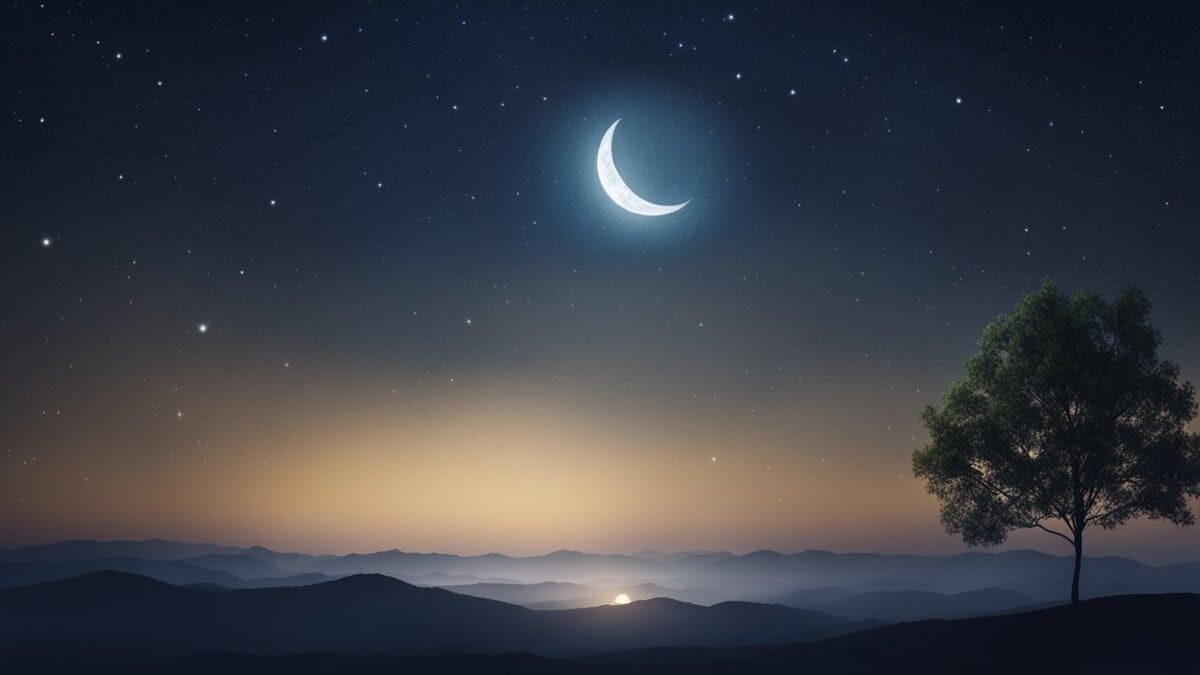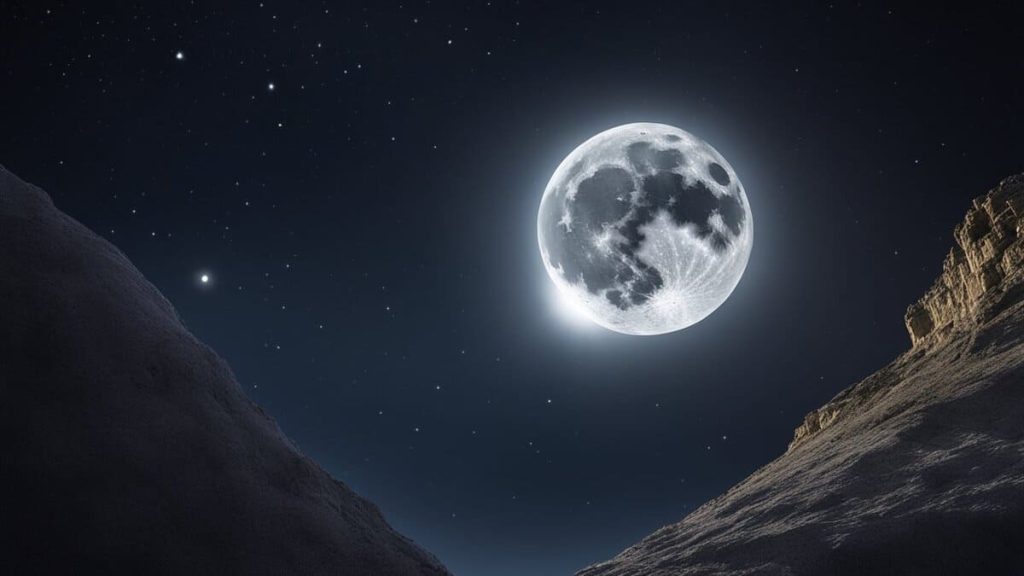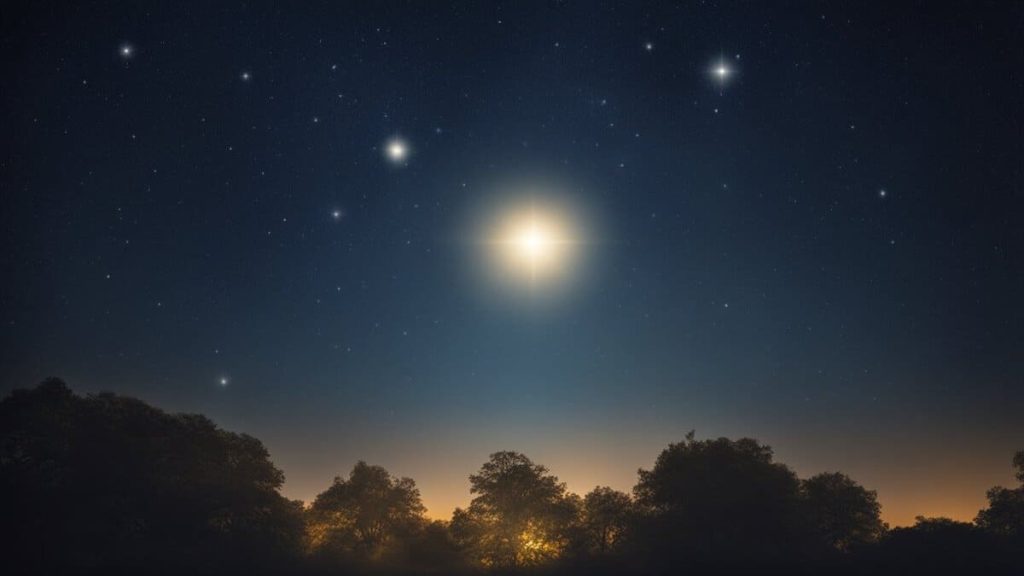You’ve looked up at the night sky, curious about the twinkling stars and the glowing moon, wondering about their true nature.
Yet, grasping the foundational differences between these celestial bodies can be perplexing. Stars generate their own light through fusion, while moons, like silent partners, merely reflect it. This contrast raises questions about their formation, size, and role in the cosmos.
I’ll guide you through the cosmic dance between stars and moons in this article. From their origins to their physical properties and how we observe them from Earth, you’ll discover the essential distinctions illuminating our understanding of the universe.
Key Things to Know:
- Stars produce their own light through nuclear fusion, while moons reflect light from stars.
- Moons orbit planets, but stars, held by their own gravity, do not.
- Understanding stars and moons enhances our appreciation of the night sky and aids navigation and science.
Recommended For You
Foundational Difference Between a Star and a Moon

Before diving into specifics, let me share from my stargazing experiences that a star is a massive, radiant sphere of plasma, producing energy through the fusion of hydrogen into helium.
In contrast, a moon is a natural satellite that orbits a planet.
Basic Characteristics
- Star: A celestial furnace where fusion creates light and heat.
- Moon: An orbiting companion to planets, reflecting sunlight, not producing any.
In my journey as an amateur astronomer, I’ve found that stars and moons are fundamental to our understanding of the cosmos. A star, like our sun, is a self-luminous celestial body. It generates light and energy due to the fusion reactions at its core.
On the other hand, a moon doesn’t make light or energy. Instead, moons reflect the light they receive from their parent star.
Formation and Composition
- Star: Born from clouds of dust and gas, mostly hydrogen and helium.
- Moon: Formed from debris around planets or captured by their gravity.
Reflecting on my observations, I’ve learned that every star begins in a nebula, a vast cloud of gas and dust. Over time, gravity pulls this material together to form a star. A star’s core is hot and dense enough for nuclear fusion to occur, where hydrogen atoms combine to create helium and release energy.
In my observations, moons often reveal themselves as leftovers from planetary formation captured by gravity.
FREE STARGAZING CHECKLIST
My 5-page Stargazing Checklist will enhance your astronomical observations.
Follow this free checklist to navigate the night sky with confidence, clarity, and a sense of preparedness for a rewarding stargazing experience.

Size and Mass
- Star: Enormous size and mass, often many times that of Earth.
- Moon: Much smaller and lighter compared to stars and planets.
Here’s a glance at how size and mass differ:
- Stars: Vary significantly in size and mass. Some are giants many times larger than the Earth, whereas others are smaller but still massive compared to other celestial bodies.
- Moons: Are smaller and their mass is less, so they don’t have enough gravity to support fusion and become stars.
Each moon’s size and mass varies, but none come close to the immense mass required to begin fusion like a star.
Now you know that size and mass determine a celestial body and what it can do, like whether it can conduct fusion or orbit around a planet.
Orbital Characteristics Between a Star and a Moon

In the sky, moons and stars move differently because of how they orbit. As I’ve observed, stars don’t orbit planets like moons do.
Let me show you precisely what I mean.
Movement and Revolution
- Stars: Through my telescope, stars appear as massive, glowing balls of gas, anchored in the cosmos by their gravity. Earth is moving when they seem to move in our sky, not them.
- Moons: From my backyard observations, moons are natural satellites, faithfully orbiting their parent planets. For example, our moon goes around Earth in a set path.
Gravitational Relationships
- Stars: They have a powerful gravitational pull but don’t orbit around planets. They can have planets orbiting them because they are huge and heavy.
- Moons: A planet’s gravity pulls on its moon, making it move in an orbit around the planet. This is how Earth’s moon keeps coming back every night.
Remember, it’s gravity that makes moons stick to their planets and keeps stars in place. They both move and revolve in space, but in their unique ways.
Visual Observation of Stars and the Moon

When you look up at the night sky, you’ll notice that the stars appear as twinkling points of light while the moon shines steadily. Let’s explore how each one stands out.
Appearance in the Night Sky
- Stars: On many clear nights, I’ve gazed at stars, seeing them as tiny, luminous dots scattered across the sky. They seem to twinkle because of the Earth’s atmosphere. The brightest stars often form patterns called constellations.
- Moon: Through my telescope, the moon is the brightest and largest object in our night sky. It doesn’t twinkle like the stars. The naked eye can see its surface details, especially the craters and mare, which are flat regions.
Phases and Variability
- Star Light: Stars don’t change their brightness or position much to the naked eye. This makes them reliable for navigation.
- Moon Phases: The moon goes through different phases every month.
- New Moon
- Crescent
- First Quarter
- Gibbous
- Full Moon
- Last Quarter
- Crescent (diminishing)
- Variability: The moon’s visibility changes. Some nights, it’s not visible at all, and during others, it’s round and full. Stars, on the other hand, don’t have phases.
By understanding these visual characteristics, you can appreciate the beauty and differences of stars and the moon in the night sky.
Cosmic Roles and Influence

Stars and moons have fascinated humans for centuries, serving as celestial wonders and tools for guidance and understanding the universe.
Their impact extends from the cultural stories woven into the night sky to the practical uses in navigation and science.
Cultural and Astrological Significance
Stars are like a map of the heavens. For thousands of years, people have looked up and seen pictures formed by stars. These pictures, called constellations, tell stories from ancient myths and help us find our place in the universe.
In astrology, which is not a science, people believe stars and planets affect our lives. For example, Jupiter, known for its size, often represents luck and abundance in astrological terms.
- Constellations serve as the backdrop for stories and myths passed down through generations.
- Astrology offers a way for you to feel connected to the cosmos, even if it’s just for fun.
Scientific and Navigational Uses
The sky is like a giant compass. Long before GPS, sailors used stars to find their way at sea. The North Star, or Polaris, is a great example. It stays in one spot in the sky, so it’s a reliable guide. Even now, astronauts learn to use stars for navigation in space.
Planets like Mars and Saturn are essential marks, too. They tell us about our solar system and what’s beyond it. Scientists study these celestial bodies to understand Earth better.
- Stars – from my experience, stars have guided travelers and astronauts alike.
- Planets – help scientists learn about the solar system.
- Dwarf planets, like Pluto, teach us about the edges of our space neighborhood.
Physical Properties and Surface Features

When you look at the night sky, you’ll notice the bright moon and stars. But there’s more to them than just their sparkle.
Let’s dive deep into what makes a moon and star unique.
Atmospheric Conditions
Stars, like our Sun, are massive and have an atmosphere. They are mostly made of hydrogen and helium and produce light and heat from nuclear reactions at their core.
Moons, on the other hand, usually don’t have an atmosphere. If you were standing on a moon like Earth’s, you wouldn’t feel any air. Earth’s moon doesn’t have any air for you to breathe.
Terrain and Climate
Moons and stars are also worlds apart when it comes to their surface:
- Stars: You can’t land on a star because it’s hot and has no solid surface.
- Moons: They have solid and often rocky surfaces. For example, Earth’s moon is solid, with a rocky and dusty terrain.
Temperature varies a lot, too. Stars are super hot due to the energy they produce. It can freeze on moons, especially without an atmosphere to hold heat.
For a moon that’s a satellite of a planet like Earth, you’ll see features such as craters, mountains, and sometimes ice or lava flows if they’re geologically active. Earth’s moon is the fifth-largest moon in our solar system, and it doesn’t have any weather because there’s no atmosphere.
Human Interaction and Exploration

When you look up at the night sky, you might wonder about the shining stars or the changing shape of the Moon.
Humans have always been curious about these celestial objects, and over time, we’ve taken considerable steps to learn more about them through research and exploration.
Scientific Missions and Research
First things first: stars are far away! They are balls of gas burning billions of miles from Earth.
We use telescopes to study them from a distance. No human or satellite has visited a star because they’re too hot and far away.
On the other hand, the Moon is much closer to Earth. Astronauts first landed on the Moon back in 1969.
Since then, several missions have been sent to study the Moon up close.
Here’s a bit of what they’ve done:
- Collected Moon rocks to learn about the Moon’s makeup.
- Set up experiments to understand the Moon’s environment.
- Took lots of pictures to map the Moon’s surface.
Future Prospects and Challenges
Looking ahead, there’s a lot of talk about going to the Moon again and even traveling to Mars. But these trips are not easy.
Spacecraft must be built to keep astronauts safe and carry enough food, water, and air. Moreover, future missions plan to investigate the possibility of living on these other worlds, which is exciting but packed with challenges:
- Figuring out how to use resources like water and building materials on the Moon or Mars.
- Making sure astronauts can stay healthy during long trips in space.
- Solving complex problems like dealing with space dust and extreme temperatures.
Remember, while we’ve explored the Moon and sent robots to Mars and beyond, places like Jupiter and Saturn are still only explored by robots from afar.
Each planet and moon has its own story, and bit by bit, we’re uncovering these stories through dedicated exploration and advanced spacecraft.
Frequently Asked Questions
How do stars and moons influence Earth’s tides?
Stars and moons, especially our Moon, influence Earth’s tides. The Moon’s gravitational pull is primarily responsible for the high and low tides we experience on Earth, affecting our oceans and weather patterns.
Can humans live on moons in our solar system?
Currently, living on moons in our solar system is beyond our reach. While some moons, like Jupiter’s Europa, may have conditions that could support life, the extreme environments and lack of an atmosphere similar to Earth’s make human habitation challenging with current technology.
Why do stars appear to twinkle but not moons?
Stars appear to twinkle due to Earth’s atmosphere. As light from distant stars passes through the atmospheric layers, it is bent, causing stars to seem flickering. Moons, being closer and reflecting steady light, appear consistent without the sparkling effect.
TL;DR
- Stars generate their own light through nuclear fusion, while moons reflect light from stars.
- Moons orbit planets due to gravitational pull, but stars remain stationary in their own space.
- The formation, size, and mass of stars and moons differ significantly, with stars born from nebulae and moons from planetary debris or capture.
- Observing stars and moons through telescopes reveals their unique movements, appearances, and roles in the night sky.
- Stars and moons have been essential for navigation and scientific research and have historically held significant cultural and astrological importance.
Your curiosity fuels our journey through the cosmos together. Whether you have questions, insights, or just a spark of interest about stars, moons, or anything celestial, I’m here to share my perspective and learn alongside you.
Let’s ignite a conversation below.




